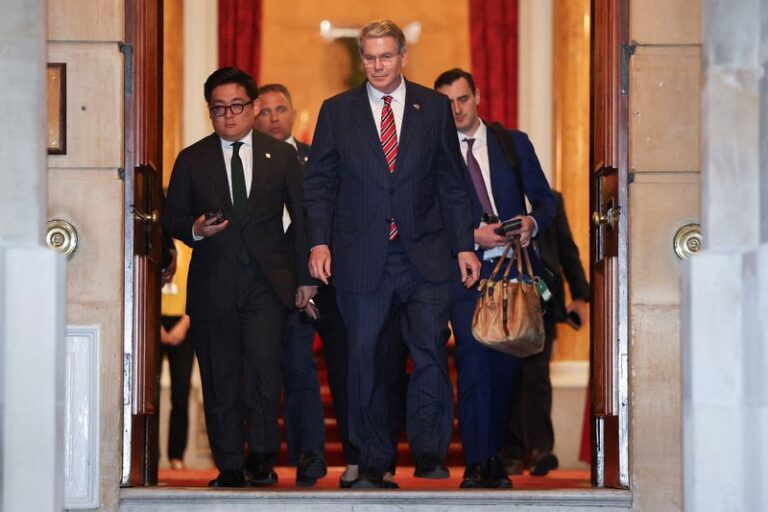By Saqib Iqbal Ahmed and Ankur Banerjee
NEW YORK/SINGAPORE (Reuters) -The latest trade truce between China and the United States offers investors hope that the two superpowers can reach a lasting resolution and prevent further market disruption, but the absence of detailed terms leaves room for potential future tariff conflicts.
President Donald Trump said on Wednesday the U.S. deal with China is done, with Beijing to supply magnets and rare earth minerals while Washington will allow Chinese students in U.S. colleges and universities.
China’s Vice Commerce Minister Li Chenggang said on Tuesday that the Chinese and U.S. negotiating teams had agreed a framework on trade after two days of talks, and would take that back to their leaders.
A White House official said the agreement allows the U.S. to charge a 55% tariff on imported Chinese goods.
Wall Street stocks edged down, while the dollar slipped. Chinese stocks inched up to near three-week highs.
The guarded reaction from currency and stock investors showed that while the meeting ended in a truce, markets had hoped for more. The lack of details means uncertainty is likely to remain high.
“The details are scarce, and both sides are claiming that their needs were satisfied … but this issue is not close to being settled,” Chris Grisanti, MAI Capital Management’s chief market strategist, said.
The main positive takeaway was the talks indicated pragmatism on both sides, analysts said. While the outcome of the talks supported riskier assets, investors appeared to remain vigilant.
“The devil is in the details… The other big piece of news is the U.S. and China seem to have a framework for further discussions, and that contradicts a statement of ‘it’s a done deal’,” said Oliver Pursche, senior vice president at Wealthspire Advisors, in New York.
With most negotiations incomplete as Trump’s July 8 deadline for a 90-day pause on tariffs on other U.S. trading partners approaches, investors remain watchful.
Markets plunged after Trump’s “Liberation Day” tariff announcement on April 2 as investors worried about an impending recession, but those fears eased as Trump rolled back most of the punitive tariffs.
The benchmark S&P 500 index has risen more than 20% from its April lows, and is close to reclaiming a record high. Chinese stocks have underperformed as investors fret over a persistently weak economy, but have nonetheless recouped losses to return to the April 2 level.
TARIFF REPRIEVE
U.S. Commerce Secretary Howard Lutnick said the latest plan to ink a deal put “meat on the bones” of an agreement reached last month in Geneva to ease bilateral retaliatory tariffs that had reached crushing triple-digit levels.
Story Continues
